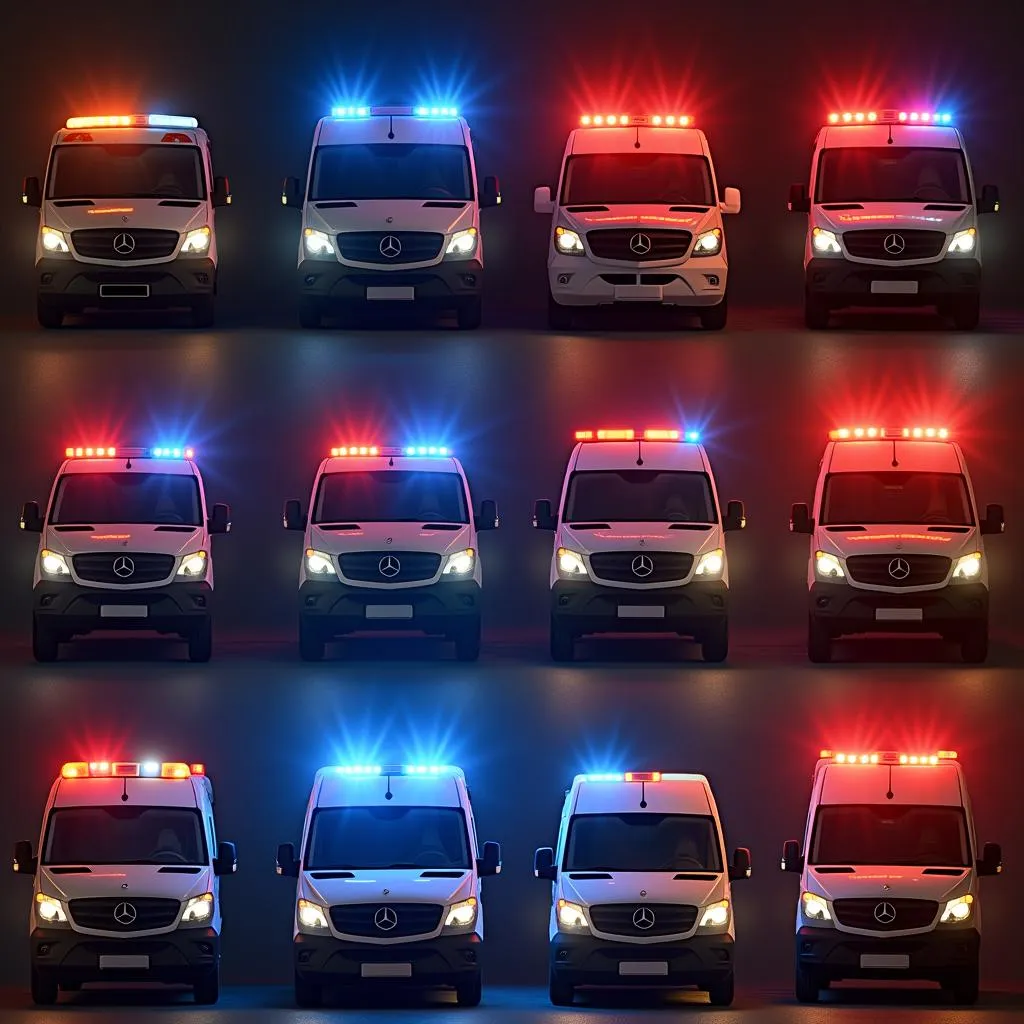Ambulance lights are a ubiquitous sight and sound, instantly recognizable as a signal of emergency medical care. But have you ever wondered about the specific colors used in these lights and their significance? The colors of ambulance lights are not random; they are carefully chosen based on factors like visibility, psychology, and regional regulations.
Decoding the Color Palette of Emergency Vehicles
While most people associate ambulance lights with red, the reality is far more nuanced. Ambulance lights can be a combination of several colors, each serving a distinct purpose:
-
Red: Universally recognized as a signal of danger and urgency, red is the most common color for emergency vehicle lights, including ambulances. Its high wavelength makes it easily visible from a distance, even in adverse weather conditions like fog or rain.
-
Blue: Often used in conjunction with red, blue lights are also associated with emergency services. Blue is believed to have a calming effect, potentially reducing anxiety in stressful situations. However, its visibility is lower than red, especially in daylight.
-
White: White lights are primarily used to illuminate the scene of an emergency, providing better visibility for paramedics and other first responders. They can also enhance the visibility of the ambulance itself.
-
Amber: Amber lights are increasingly used on ambulances, especially in certain regions. Amber is highly visible in various weather conditions and is thought to be more noticeable than red in daylight. It can also signal caution, alerting other drivers to yield the right of way.
 Ambulance Lights: Color Variations Around the World
Ambulance Lights: Color Variations Around the World
The Science Behind the Colors
The effectiveness of ambulance light colors is rooted in scientific principles:
- Wavelength and Visibility: Red and amber have longer wavelengths, making them easier to perceive from afar, especially under poor visibility conditions.
- Chromatic Aberration: The human eye focuses different wavelengths of light slightly differently. This phenomenon, known as chromatic aberration, can make blue lights appear blurred or out of focus, especially at night.
- Psychological Impact: Colors evoke different emotional and behavioral responses. While red is associated with danger and urgency, blue is linked to calmness and authority.
Regional Regulations and Variations
The specific colors and combinations allowed for ambulance lights vary significantly across countries and even regions within a country. For instance, some countries primarily use blue lights, while others favor red or a combination of both. These regulations are based on local traffic laws, visibility studies, and traditional practices.
 Map Highlighting Ambulance Light Regulations
Map Highlighting Ambulance Light Regulations
Beyond the Basics: Other Factors Influencing Visibility
Apart from color, several other factors contribute to the effectiveness of ambulance lights:
- Flash Pattern: The flashing or rotating pattern of the lights is crucial in attracting attention and signaling urgency.
- Intensity: Brighter lights are naturally more visible. Modern LED lights offer high intensity while consuming less power.
- Placement and Number: Strategically placed and multiple lights ensure visibility from various angles.
Understanding Ambulance Lights: A Shared Responsibility
While it’s fascinating to delve into the specifics of ambulance light colors, the most crucial takeaway is understanding their universal message: Yield the right of way to emergency vehicles. Recognizing the significance of these lights and responding appropriately can be life-saving.
 Yielding the Right of Way to an Ambulance
Yielding the Right of Way to an Ambulance
FAQs
1. Why do some ambulances have green lights?
Green lights are not typically used on ambulances. In some countries, green lights might be used on other emergency vehicles or volunteer firefighter vehicles.
2. Are there any regulations regarding the brightness of ambulance lights?
Yes, most regions have regulations limiting the maximum intensity of ambulance lights to prevent them from being blinding to other drivers.
Need Help with Your Next Project?
If you’re looking to add a splash of color to your life, Color Box Hà Nội is here to help! Contact us today for expert advice and inspiration.
Phone: 0373298888
Email: [email protected]
Address: 86 Cầu Giấy, Hà Nội
We have a 24/7 customer service team ready to answer any questions you may have.

